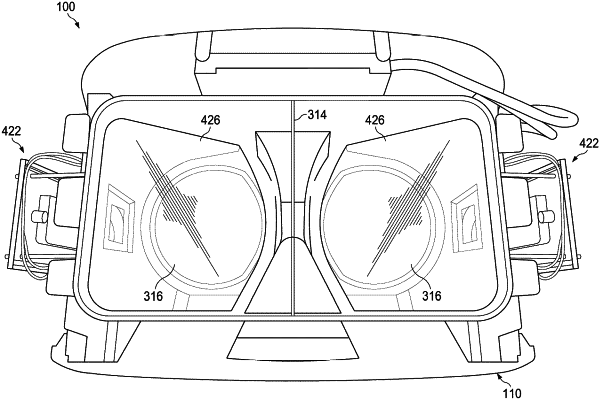| CPC A61B 3/101 (2013.01) [A61B 3/0008 (2013.01); A61B 5/6803 (2013.01); A61B 2562/0271 (2013.01); A61B 2562/029 (2013.01)] | 23 Claims |

|
1. A headset for monitoring periocular humidity, comprising:
a housing configured to be positioned on a user's face, the housing defining a periocular air space;
a humidity sensor configured to measure a humidity of air within the periocular air space;
an ophthalmic testing unit configured to measure a physiological parameter of an eye of the user; and
a processor coupled to the humidity sensor and the ophthalmic testing unit, wherein the processor runs an algorithm to:
receive the measured humidity and the measured physiological parameter;
compensate for the humidity of air within the periocular space in the measured physiological parameter, by adjusting the measured physiological parameter based on the measured humidity to produce an adjusted physiological parameter as an output; and
determine an ophthalmic condition based on the adjusted physiological parameter, wherein the physiological parameter relates to blinking of the eye and the ophthalmic condition corresponds to a dry eye condition.
|